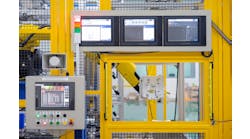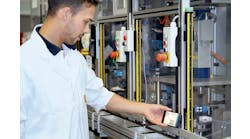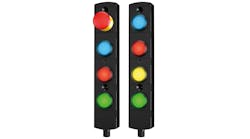Machine safety is crucial to avoiding injuries and accidents at work, in addition to protecting machinery from being damaged. Interlock switches, light curtains, safety mats and emergency-stop buttons, when used correctly, could save people's lives and avoid downtime.
Safety interlock switches are devices that help make sure a machine is safe to use by limiting access to potentially hazardous areas unless particular conditions are met. They have been aimed to avoid accidents and properly protect workers.
There are various types of safety interlock switches, including hinge interlock switches and tongue interlock switches, which use hinged arms to bar entry into hazardous areas and require a key to unlock them. Magnetic switches, radio-frequency identification (RFID) switches and cable-operated switches are additional types.
Main applications for safety interlock switches include manufacturing, food processing and packaging. To protect employees from dangerous areas while the machines are running, they have been commonly used on machinery such as presses, conveyors and robotic cells.
Safety light curtains are tools that stop machines from functioning if they detect the presence of an object or person in a given area. They are aimed to protect workers from dangerous circumstances and stop machines from functioning when someone is in danger.
When a space needs to be protected, safety light curtains emit a variety of infrared beams across the area. The light curtain sends a signal to the machine's control system to stop the operation and avoid possible damage or injury if the beams are broken by either an individual or object entering the area.
Safety light curtains come in a variety of models, including hand protection curtains that protect the fingers and hands from possibly dangerous areas and perimeter protection curtains that protect larger spaces such as robot work cells or assembly lines. Muting light curtains and fixed or floating blanking light curtains are additional types.
Uses for safety light curtains include packaging lines, assembly lines and robotic work cells. Common applications include stopping unauthorized entry into restricted areas, protecting people from unsafe areas such as machinery or robots and guaranteeing the safety of both people and machinery during manufacturing processes.
A safety reaction takes place when a person or object is sensed by safety mats. They are meant to protect workers from dangerous locations and stop machines from functioning if someone is in danger. Safety mats are commonly used in factories and manufacturing settings.
Safety mats operate by sensing the weight or pressure of an individual or an object on the surface of the mat. The mat senses pressure and signals the machine's control system to stop running in order to prevent damage or injury. Usually, the mats are placed in front of equipment or other dangerous areas.
There are different kinds of safety mats, such as area mats that cover a larger area and detect the presence of individuals or objects there, and pressure-sensitive mats that detect the weight of an individual or object and activate a safety response. Other types include ramp mats, which make it simple for wheelchair users or carts to access areas, and edge mats, which protect machinery's edges.
Safety mats have several uses, including those in industrial and manufacturing settings. They are usually installed in front of machinery or other unsafe areas to stop accidents and are a way to protect workers. To protect pedestrians, safety mats may additionally be placed in areas where forklifts or other vehicles are used.
Emergency-stop (e-stop) buttons are devices used to safely and quickly shut down machinery in the event of an emergency. They provide a fast and dependable way to shut down machines and are designed to avoid accidents and protect workers from injury.
Emergency-stop buttons are available in many different styles, such as push-button e-stops, which are pressed to energize, and rope-pull e-stops that are energized when pulling a cord or cable. Other styles include wireless e-stops, which are remotely activated, key-operated e-stops and twist-to-release e-stops.
Industrial, manufacturing and packaging environments are just a few places where emergency-stop buttons are used. They are used on equipment such as presses, conveyors and robotic cells to provide a quick and reliable way to stop machines from running in an emergency, preventing potential damage or injury.
Trying to identify possible risks and implementing the required safety measures are essential to ensuring machine safety in a wide range of industries. To make absolutely sure safety devices are working correctly, routine safety inspections and maintenance are also needed. All employees should receive appropriate training and discussion regarding safety practices. In order to protect their workers, employers should make a point of focusing on safety and offer a safe workplace.





